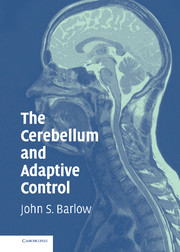Book contents
- Frontmatter
- Contents
- Preface
- Acknowledgments
- PART ONE ANATOMY AND PHYSIOLOGY OF THE CEREBELLAR SYSTEM
- PART TWO CEREBELLAR FUNCTIONS
- PART THREE MODELS AND THEORIES
- PART FOUR SUMMARY AND CONCLUSIONS
- 17 The Cerebellum as an Adaptive Controller
- APPENDIX A A Hybrid Analogue/Digital Multiplexer/Multiplier-Based Adaptive Signal Processor
- Author's Note
- Bibliography
- Index
17 - The Cerebellum as an Adaptive Controller
Published online by Cambridge University Press: 28 October 2009
- Frontmatter
- Contents
- Preface
- Acknowledgments
- PART ONE ANATOMY AND PHYSIOLOGY OF THE CEREBELLAR SYSTEM
- PART TWO CEREBELLAR FUNCTIONS
- PART THREE MODELS AND THEORIES
- PART FOUR SUMMARY AND CONCLUSIONS
- 17 The Cerebellum as an Adaptive Controller
- APPENDIX A A Hybrid Analogue/Digital Multiplexer/Multiplier-Based Adaptive Signal Processor
- Author's Note
- Bibliography
- Index
Summary
Introduction
In this final chapter, a brief retrospective is presented on the history of the cerebellum as an adaptive controller, a term used as an inclusive term also for adaptive signal processor (ASP) and adaptive filter, to refer to a system having the capability to adjust or optimize its own parameters automatically. An alternative but equivalent view of the cerebellum as a three-layer neural net follows. Then, the significance of the basic uniformity of the structure of the cerebellar system is briefly reviewed, as a preliminary to several other topics. (As previously in this book, the term cerebellar system refers to the cerebellar cortex, cerebellar nuclei, and the inferior olive [the olivary nucleus], together with their interconnections.) The significance of the two principal afferent fiber systems of the cerebellum is then considered in relation to their features and to their counterparts in adaptive controllers.
Next, the vestibulo-ocular reflex (VOR), which is based on the vestibulocerebellum, is viewed as the simplest and most straightforward manifestation of an adaptive controller model of the cerebellum. The VOR is then used as a model for the functions of the remaining parts of the cerebellum, the spinocerebellum and the cerebrocerebellum, including the controversial question of the cerebellum and cognition. Then, some remaining problems are considered, such as the functions of the cerebellar nuclei and especially the inferior olive, and the function of negative and positive feedback circuits.
- Type
- Chapter
- Information
- The Cerebellum and Adaptive Control , pp. 273 - 292Publisher: Cambridge University PressPrint publication year: 2002



